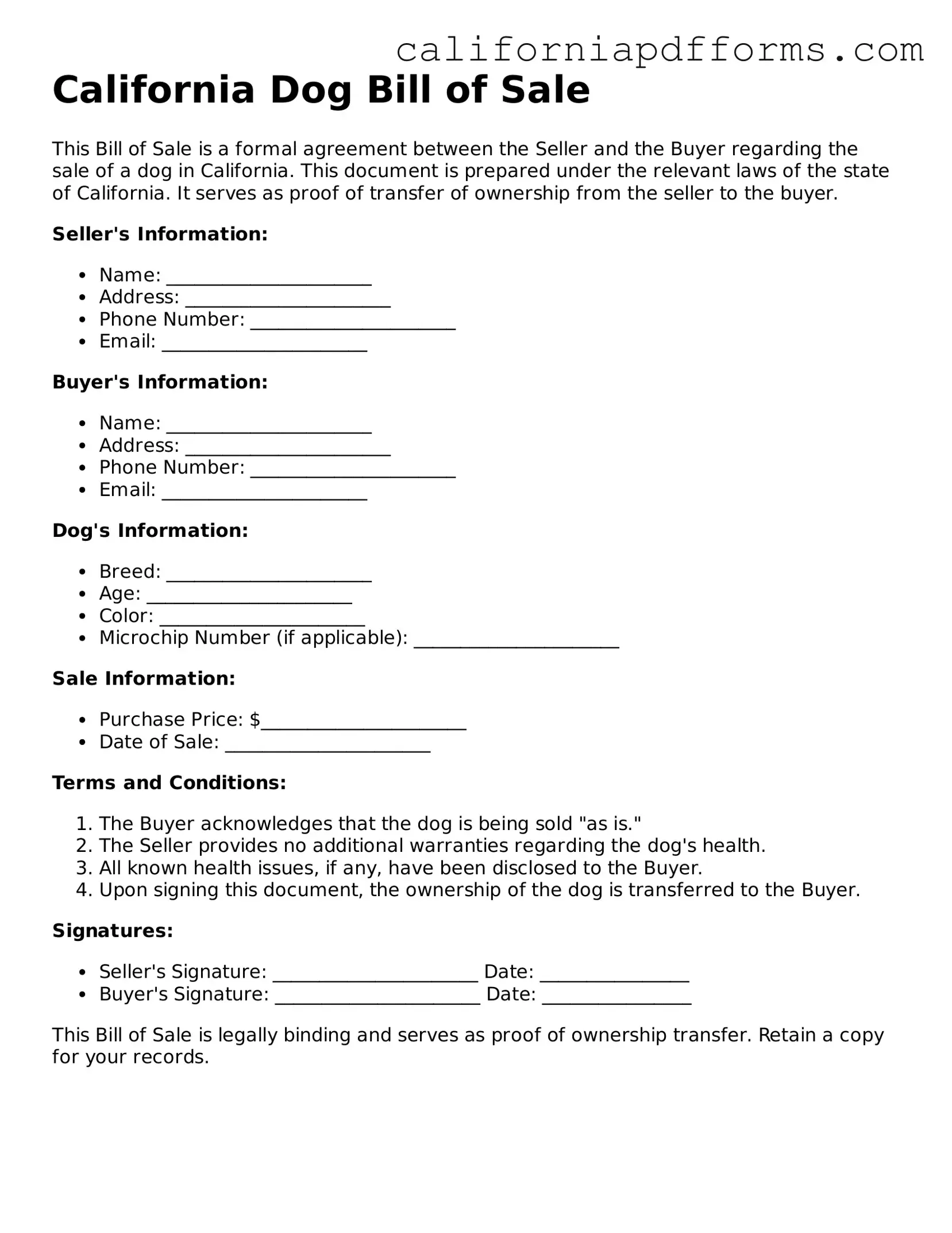A California Dog Bill of Sale form is a document used to record the sale or transfer of ownership of a dog. This form serves as proof of the transaction between the seller and the buyer. It typically includes details about the dog, such as its breed, age, and any identifying information like microchip numbers.
Why is a Dog Bill of Sale important?
This form is important for several reasons:
-
It provides legal proof of ownership, which can be crucial in case of disputes.
-
It helps to document the dog's health and vaccination history.
-
It can assist in the transfer of any warranties or guarantees associated with the dog.
When filling out a Dog Bill of Sale, be sure to include the following information:
-
The names and addresses of both the seller and the buyer.
-
A detailed description of the dog, including breed, age, color, and any identifying marks.
-
The sale price and payment method.
-
The date of the sale.
-
Any warranties or guarantees provided by the seller.
No, a Dog Bill of Sale does not need to be notarized in California. However, both parties should sign the document to confirm their agreement. Keeping a copy for your records is also advisable.
Can I use a Dog Bill of Sale for other pets?
While this form is specifically designed for dogs, similar forms can be used for other pets. Just make sure to adjust the details accordingly, such as the type of animal and any specific health information relevant to that pet.
What happens if I lose the Dog Bill of Sale?
If you lose the Dog Bill of Sale, it may be difficult to prove ownership. It's wise to keep multiple copies in safe places. If needed, you can recreate the document by gathering the same information and having both parties sign it again.
You can find a California Dog Bill of Sale form online through various legal websites, or you can create one using a template. Ensure that any form you use meets California's requirements for pet sales.
